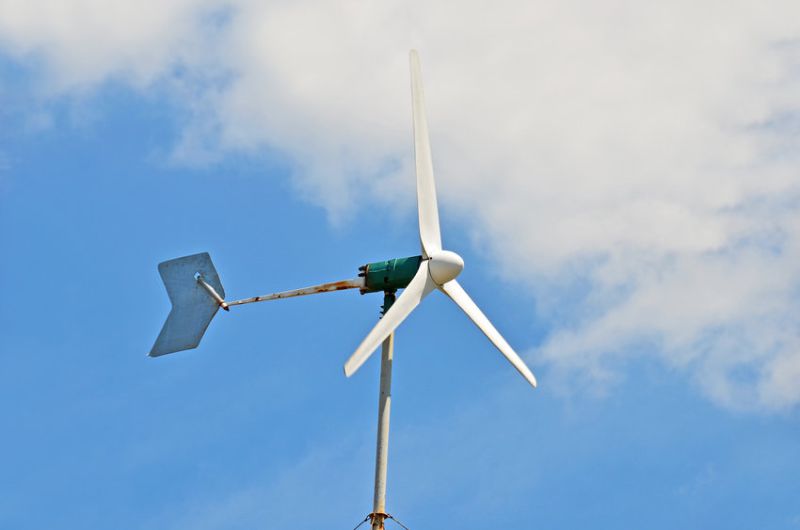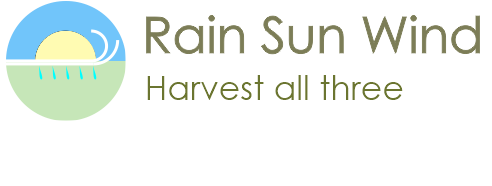
The short answer is only if it is more effective than adding extra solar panels. You must consider some important factors when making this decision. This means asking some important questions. Here are some of the major ones:
Is it difficult to add extra solar panels?
This is one question you must answer before adding a wind turbine to your solar power system. If you have plenty of unshaded space to add solar panels, then you don’t need a wind turbine. It would not be worth the extra cost and complication.
But if you lack the space for extra panels, then a wind turbine can help. Also, you don’t have to worry about the sunny or shaded side when installing a wind turbine. Instead, you need to worry about things that can obstruct the wind.
Is it windy when it is not sunny?
If a place is windy, that by itself is not enough to guarantee that wind power is cheaper than extra solar power. For example, the desert in northwestern New Mexico can be quite windy. This desert is also extremely sunny, so solar power is still more effective than wind power.
So, wind power is great in locations where it is windy when the sun is not shining. This includes places that get windy nights and places that get overcast windy days. Some of the best locations are places that get long winter nights and short winter days. These are places that are far from the Equator. With that being said, a solar power system will still produce power on a cloudy day. So, the Sun is more reliable than the wind.
The National Renewable Energy Laboratory (NREL) has some great maps that show the average daily sunshine for different areas. It has a chart for each month. Also, the National Oceanic and Atmospheric Administration (NOAA) has average monthly wind charts. These are excellent planning resources.
Is wind energy suitable for your property?
Many factors can make wind energy unsuitable for your property. One such factor is the local building code. Some jurisdictions do not allow residential wind turbines. And many jurisdictions that allow them, have strict rules about permitting them. Here are some typical rules:
The wind turbine must be at least 40 feet from any primary structure.
The wind turbine must be no closer to the property boundary than its height.
No part of the wind turbine, including guy wire anchors, can be closer than 10 feet to the property boundary.
The owner of the wind turbine must provide at least $300,000 of liability insurance.
The noise level should be no greater than 35 decibels during sleeping hours when measured from the nearest property line.
These rules are not universal, but they are common and there are many more rules. Many of these rules demand plenty of land space and don’t work with small properties. Also, the required distance from your house will cause transmission losses. These will affect the performance of your system. So, you must decide if you can accept these losses.
Can you have the right type of wind turbine?
You will often get the best power output from tall horizontal axis wind turbines. It is even better if there are no nearby buildings to create turbulence. But constraints might prevent you from getting this. Your situation might dictate a shorter and quieter vertical axis wind turbine. Again, you must decide if what you can get meets your needs.
Can you deal with the maintenance?
Unlike solar panels, wind turbines have moving parts. This means that they will need more maintenance. Not only will they not produce power during maintenance, but they will demand your time and money. It is even worse if a malfunction causes the need for maintenance.
You can reduce malfunctions by performing regular preventative maintenance. It also helps if you do the maintenance during the sunniest season. That way the solar panels are producing enough to make up for losing wind power.
You can reduce maintenance by getting a low-maintenance model, such as one with a vertical axis. Vertical axis wind turbines have fewer moving parts than horizontal axis wind turbines. They also sit closer to the ground. This means that the maintenance is easier to perform and they need less of it. But they often produce less power than horizontal axis wind turbines. So you will have to find the balance between power and ease of maintenance that works for you.
Do you have a plan to deal with excess energy?
Wind turbines need to power a load when they are turning. It gives the braking needed to prevent them from over-speeding. Otherwise, they would over-speed and self-destruct. This applies if your wind turbine is producing more power than you can use, store, and sell to the grid.
When there is no real power demand, the wind turbine must power an artificial load called a diversion load. This diversion load (also called a dump load) can be as simple as a resistor or as elaborate as a water heater. You can choose simplicity or recapturing waste energy. Whatever the case, the diversion load must be able to handle at least the full rated power of the wind turbine.
In summary, there are some important things to consider before adding wind power to your solar power system. This is because it is often easier to add extra solar panels. So, ask the following questions:
Is it difficult to add extra solar panels?
Is it windy when it is not sunny?
Is wind energy suitable for your property?
Can you have the right type of wind turbine?
Can you deal with the maintenance?
Do you have a plan to deal with excess energy?
If you answer yes to all these questions, then adding wind energy might be right for you. If not, then you will be better off improving your solar power system.
